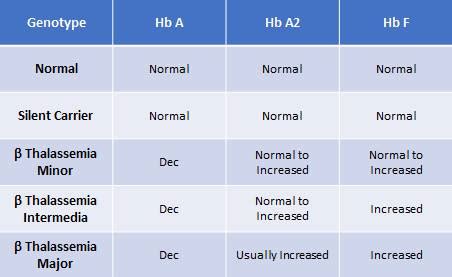hemoglobin s beta thalassemia|Beta Thalassemia : Clark Hemoglobin S–beta-thalassemia disease is a hemoglobinopathy that causes symptoms similar to those of sickle cell disease, but less severe. (See also Overview of Hemolytic Anemia.) CITY OF LOS ALTOS BUILDING INSPECTION SERVICES Los Altos CA 94022 Building Phone Number: 650-947-2752
[email protected] https://trakit.losaltosca.gov/etrakit . The City of Los Altos is pleased ONLINE:to announce the implementation of our City-wide, internet-based software system that allows access to

hemoglobin s beta thalassemia,
Hemoglobin S–beta-thalassemia disease is a hemoglobinopathy that causes symptoms similar to those of sickle cell disease, but less severe. (See also Overview of Hemolytic Anemia.)Hb S/β 0 -Thal, in which the production of Hb A is abolished, is often clinically indistinguishable from sickle cell anemia. The thalassemia acts on sickled red blood cells, inducing microcytosis, hypochromia, and sometimes Hb F is elevated.Beta thalassemia is an inherited blood disorder that limits your body’s ability to make beta-globin. Beta-globin is an important protein needed to make hemoglobin and red blood cells. Beta thalassemia can cause you to experience anemia symptoms. Types include beta thalassemia major, beta thalassemia intermedia and beta thalassemia minor.hemoglobin s beta thalassemia Beta-thalassemia refers to an inherited mutation of the beta-globin gene, causing a reduced beta-globin chain of hemoglobin. The highest prevalence of beta-thalassemia mutations is in people of Mediterranean, Middle Eastern, and Asian descent.Beta Thalassemia Briefly, HbSS and HbS/b thalassemia genotypes cannot be definitely characterized by electrophoretic and hematologic data, resulting in misdiagnosis. c.315+16G>C and c.316-185C>T are previously reported as benign; at least one of the two mentioned mutations, when combined with HbS, causes transfusion-dependent HbS/b.Hb E trait: microcytosis (mean MCV=65fl). No anemia. The test examines the complete beta globin coding sequence, the splice sites and other intronic regions known to harbor mutations, the proximal promoter region, and the 5’ and 3’UTR regions. Kaushansky K, Lichtman MA, Beutler E, Kipps TJ, Prchal J, Seligsohn U. Willam’s Hematology.

What is s, βeta-thalassemia? S, beta-thalassemia is an inherited (genetic) condition that affects the hemoglobin and red blood cells. Hemoglobin is a part of your red blood cells, which carry oxygen to your body. S, beta-thalassemia is a form of sickle cell disease.

What is s, βeta-thalassemia? S, beta-thalassemia is an inherited (genetic) condition that affects the hemoglobin and red blood cells. Hemoglobin is a part of your red blood cells, which carry oxygen to your body. S, beta-thalassemia is a form of sickle cell disease.hemoglobin s beta thalassemia Beta Thalassemia What is s, βeta-thalassemia? S, beta-thalassemia is an inherited (genetic) condition that affects the hemoglobin and red blood cells. Hemoglobin is a part of your red blood cells, which carry oxygen to your body. S, beta-thalassemia is a form of sickle cell disease.When you have thalassemia, your body makes less hemoglobin than normal. Hemoglobin is an iron-rich protein in red blood cells. It carries oxygen to all parts of the body. There are two main types of thalassemia: alpha and beta. Different genes are affected for each type. Thalassemia can cause mild or severe anemia.
hemoglobin s beta thalassemia|Beta Thalassemia
PH0 · The compound state: Hb S/beta
PH1 · Thalassemia
PH2 · Sickle Cell Trait
PH3 · S, βeta
PH4 · Laboratory Diagnosis of Hemoglobinopathies and Thalassemia
PH5 · Hemoglobin S–Beta
PH6 · Difficulties in the diagnosis of HbS/beta thalassemia: Really a mild
PH7 · Beta Thalassemia: Types, Symptoms & Treatment
PH8 · Beta Thalassemia